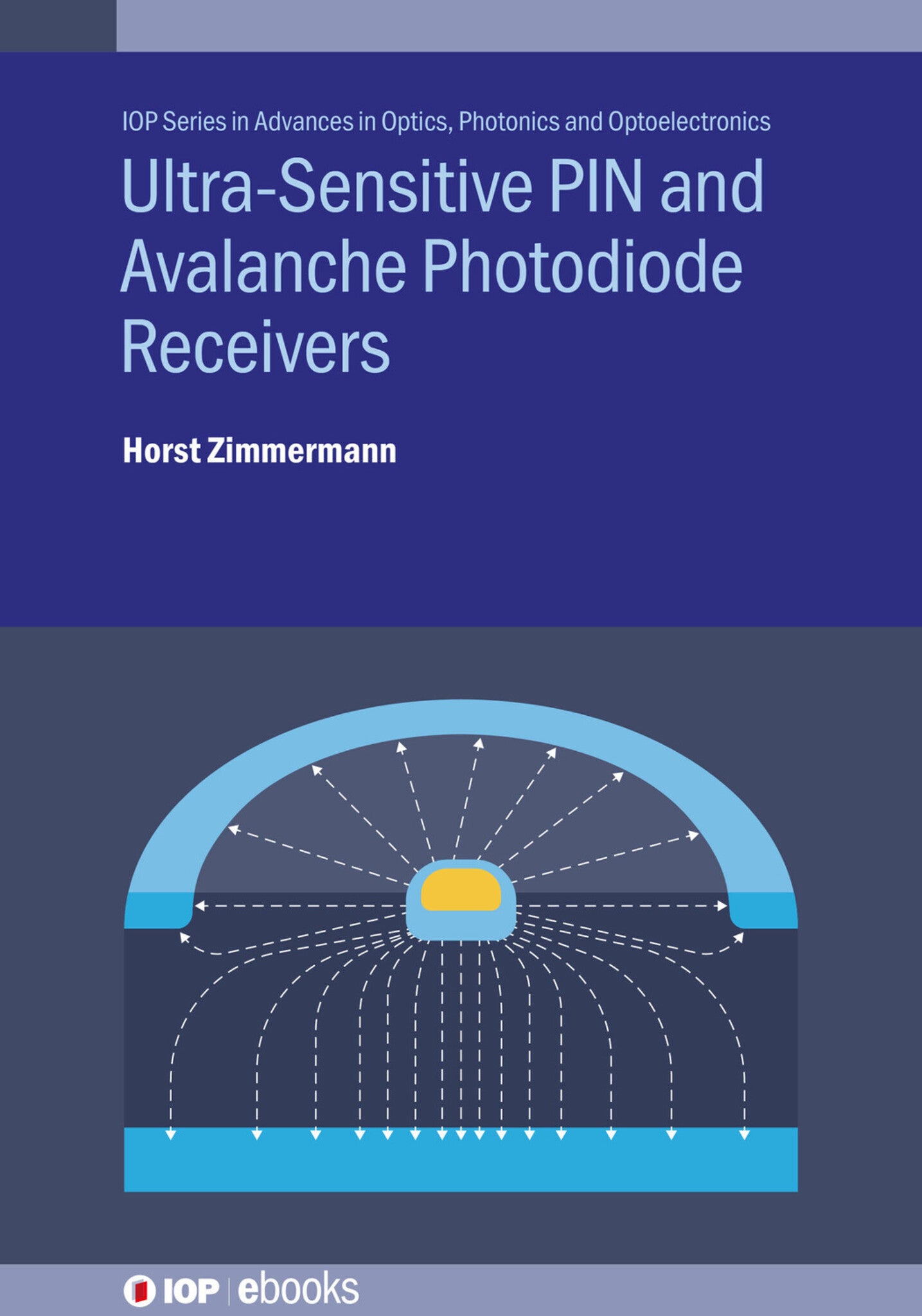We're sorry. An error has occurred
Please cancel or retry.
Ultra-Sensitive PIN and Avalanche Photodiode Receivers

Some error occured while loading the Quick View. Please close the Quick View and try reloading the page.
Couldn't load pickup availability
- Format:
-
11 October 2023

This book focuses on ultra-sensitive PIN and avalanche photodiode receiver (USPAR) ICs for data communication. After more than 20 years of exploitation of the pin-photodiode CMOS technology leading to efficient APD and SPAD receivers and sensors, this book describes how ultra-sensitive PIN photodiode receivers close the loop back to PIN photodiode ICs.
In contrast to conventional optical receivers, which are based on resistive-feedback transimpedance amplifiers (TIAs), the book uses charge integration on small photodiodes with a low capacitance known from image sensors to reduce the noise considerably – even better sensitivity than with SPAD receivers is achieved. To obtain a much larger light sensitive area as in pixels of image sensors, innovative low-capacitance pin-finger and dot photodiodes are introduced.
Important advantages of USPAR ICs are much lower circuit complexity, much smaller chip area and much lower power consumption as of SPAD receivers. In addition, error correction can be avoided. Detailed investigations of photodetectors and integrating amplifiers with many surprises and astonishing results of newest research will be described.
Key Features:
-
Describes newest research results in the field
-
Covers basics to applications
-
Includes properties of USPAR receivers compared to that of SPAD receivers in compact form.
-
Explains dedicated ultra-low-noise circuits to exploit charge-integrating receivers in detail.
-
Presents microelectronics and optoelectronics combined in an easily understandable way.
-
Included numerous elaborate illustrations and tables facilitate and enhance comprehension.

SCIENCE / Physics / Optics & Light, Optical physics, TECHNOLOGY & ENGINEERING / Optics, TECHNOLOGY & ENGINEERING / Sensors, Applied optics, Electrical engineering

Preface
Author biography
Symbol
1 Motivation
1.1 PIN-photodiode and APD receivers
1.2 SPAD receivers
1.3 Quantum image sensors
1.4 The principle of ultra-sensitive PIN and avalanche photodiode receivers
References
2 Basics of photodiodes
2.1 Optical absorption and photogeneration
2.2 Drift and diffusion
2.3 Width of space-charge region and capacitance
2.4 Impact ionisation
2.5 Breakdown voltage
References
3 Basics of noise and sensitivity
3.1 Thermal noise
3.2 Shot noise
3.3 1/f Noise
3.4 Noise in field-effect transistors
3.5 Noise of PIN-FET receiver
3.6 Sensitivity
3.7 TIA noise
3.8 Noise bandwidth
3.9 Noise of integrator
3.10 Excess noise of APDs
3.11 Photon noise
3.12 Reset noise
References
4 Basics of optical receivers
4.1 Resistive-feedback transimpedance amplifiers
4.2 Current amplifiers
4.3 Integrating optical receivers
References
5 Low-capacitance photodiodes
5.1 PIN photodiodes—a predictive insight
5.2 PIN photodiodes in 0.18 μm CMOS
5.3 Avalanche photodiodes
5.4 Multi-dot photodiodes for large photosensitive areas
5.5 Isolation of circuits
References
6 Ultra-sensitive PIN photodiode receivers
6.1 Inverter integrator in 0.35 μm CMOS
6.2 Integrator with common-source amplifier in 0.35 μm CMOS
6.3 Inverter integrator in 0.18 μm CMOS
6.4 Integrator with common-source amplifier in 0.18 μm CMOS
6.5 Reset-less integrating receiver
6.6 Reset-less integrating receiver with punch-through device
References
7 Ultra-sensitive avalanche photodiode receivers
7.1 Three-inverter TIA with resistive feedback
7.2 Three-inverter TIA with negative capacitance and resistive feedback
7.3 Integrating APD receivers
References
8 Summary and completion
8.1 Recapitulation
8.2 Comparison
References



